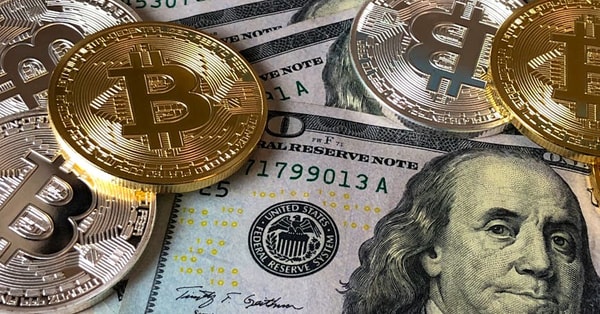Evaluating the Impact of ETFs on Solana's Staking Landscape
Exploring the effects of ETFs on Solana's staking model reveals intriguing dynamics for yield distribution and potential centralization risks.
Solana has cultivated a robust staking culture over the years, with more than two-thirds of its circulating supply delegated to validators. This ecosystem allows participants to earn approximately 6% annually through a combination of inflation and transaction fees. However, the emergence of non-staking Solana ETFs may introduce significant changes to this dynamic.
As participation in Solana’s ecosystem evolves, a new contender has emerged: exchange-traded funds (ETFs) that are either unable or unwilling to stake their SOL assets.
One notable example is the ChinaAMC Solana ETF, which commenced trading on October 27 and has a clear directive against staking any of its SOL holdings. In contrast, the United States is home to three products that support staking: REX-Osprey's SSK, Bitwise's BSOL, and Grayscale's GSOL.
These funds instruct their custodians to delegate and manage rewards after fees have been deducted. This sets the stage for an intriguing experiment: will substantial pools of non-staking ETF capital siphon resources from Solana’s validator economy, or will the resulting yield feedback loop draw liquidity back onto the blockchain?

The outcome hinges on which model manages to scale more effectively. Non-staking ETFs introduce a straightforward fee burden. For instance, the ongoing charges for ChinaAMC’s fund are set at 1.99% for the first year, which effectively transforms a potential 6% staking yield into a negative 2% tracking difference compared to the spot rate.
Conversely, stake-enabled products like SSK can provide a positive yield carry, delivering approximately 4.8% to 5.1% after taking into account the fund's 0.75% expense ratio and the fees related to custodian-validator infrastructure.
However, this convenience is not without its risks, particularly concerning centralization. SSK's prospectus permits the custodian to select validators, and the fund also has stakes in non-U.S. exchange-traded products (ETPs) that delegate significant amounts of SOL.
If a handful of custodians manage billions in delegations, it could lead to a concentration of Solana's consensus power and miner extractable value (MEV) in the hands of institutional players, rather than being distributed through community choices.

Solana's staking reward architecture is designed to be self-correcting. The inflation mechanism ensures that SOL is distributed proportionally among all stakers. Therefore, when the proportion of staked SOL decreases, the rewards from the same pool are divided among fewer participants, resulting in an increased per-staker annual percentage yield (APY).
This creates a natural incentive for capital to flow back onto the blockchain until a new equilibrium is reached.
To illustrate the mathematics: if the circulating supply is approximately 592.5 million SOL and the baseline staked ratio is 67%, then a non-staking ETF with $1.5 billion in assets under management (AUM), which equates to around 7.5 million SOL at a price of $200 per token, would reduce the staked ratio to roughly 65.7%.

The APY would scale inversely, increasing from 6.06% to about 6.18%, an increase of 12 basis points. If AUM were to rise to $5 billion, the APY boost would reach 41 basis points, and a $10 billion AUM would result in an increase of 88 basis points.
The implication here is clear: non-staking ETFs do not diminish on-chain yields; rather, they subtly enhance them. The larger the pool of non-staked assets, the more appealing native staking becomes for anyone capable of holding SOL directly and delegating to a validator.
This scenario stands in stark contrast to the initial concern that “ETFs would deplete staking resources.” Instead, non-staking funds serve as a subsidy for those who continue to stake, concentrating rewards among active participants while institutional capital remains static in brokerage accounts.
In contrast, stake-enabled ETFs such as SSK alter the equation. When these funds delegate their holdings, the staked ratio remains largely unchanged, and consequently, APYs stay close to the baseline levels.

However, the validators that receive these delegations are chosen based on the relationships between custodians and fund policies, rather than through community-driven signals or performance evaluations.
Moreover, SSK’s structure allows it to include other staked ETPs alongside directly delegated SOL, creating a complex layer of intermediaries that includes fund sponsors, custodians, and ETP managers. This layered approach raises additional questions about the decentralization of power within Solana’s ecosystem.
As the landscape continues to evolve with the introduction of both non-staking and stake-enabled ETFs, the potential implications for Solana’s staking dynamics will be closely monitored. The balance between convenience, yield, and centralization will be crucial in determining the future of participation within the Solana network.
Tags:
Related Posts
Your Easy Guide to Setting Up a Cryptocurrency Wallet
Overwhelmed by crypto? Learn how to set up your first wallet and securely store your digital assets with this beginner-friendly guide!
10 Smart Tips to Spot Legit Crypto Projects and Avoid Scams
Worried about crypto scams? Discover essential tips to identify legitimate projects and make smarter investments in the ever-evolving crypto landscape.
Mastering Bitcoin: Your Guide to Dollar-Cost Averaging
Feeling overwhelmed by Bitcoin’s price swings? Discover how dollar-cost averaging can help you invest stress-free and grow your crypto portfolio.
Finding Your Perfect Hardware Wallet for Crypto Security
Confused about which hardware wallet to choose for your crypto? Let me guide you through the essentials to secure your digital investments safely.
Blockchain Uncovered: Your Friendly Guide to the Future
Curious about blockchain? Join me as we simplify this groundbreaking technology and explore its benefits for you and the world around us!
5 Conservative Crypto Trading Strategies for Cautious Investors
Feeling overwhelmed by crypto? Discover five conservative trading strategies that let you dip your toes into the market without diving in headfirst.